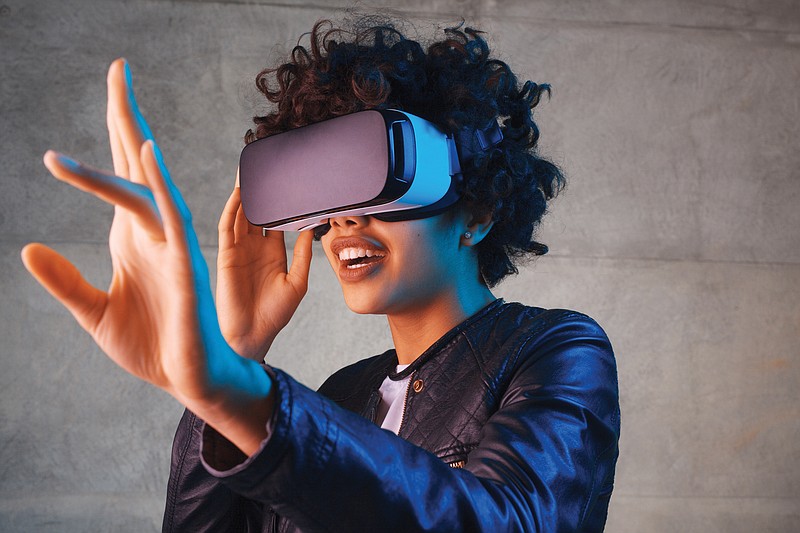I am standing in a room. Before me, a three-paneled flat screen TV displays a list of games. To my left, floor-to-ceiling windows peer out onto a stone patio, beyond which loom ancient cedars and blue-hued mountains that I do not recognize. A crow flies past the glass and perches on a nearby branch.
I reach up and touch my goggles - a reminder that none of this is real.
"Virtual reality is like going to another planet. It's a whole new world," says Matt Cole, founder of NoogaSystems VR Center, Chattanooga's first virtual reality gaming arcade.
Virtual reality gaming is where a player can experience and interact with a three-dimensional world by way of virtual reality goggles, a high-end computer, two hand controllers, and infrared sensors which detect the precise movements of the player.
The difference between a video game and a VR game, Cole says, is "the difference between watching a movie and being in the movie."
According to a report by Zion Market Research, which studies market analytics worldwide, the technology is transforming the media and entertainment industry. In 2018, the global augmented and virtual reality market was valued at $26.7 billion. By 2025, says the report, it is expected to become an $814.7 billion industry - and one that reaches far beyond gaming.
Cole predicts that within the next couple of years, advancing technology will make the VR experience less cumbersome. For example, those heavy goggles, he says, might become a pair of contact lenses.
But his biggest prediction is that augmented reality, a technology that enhances the real world with computer-generated information, will become more important than VR, and that it will reshape how we share information.
With AR, Cole explains, "You'd basically put on a pair of glasses, and say you looked at Walmart - you'd see the building, but also the store's address, hours and all that stuff would pop up. Instead of picking up your phone and Googling something, you'd just put on a pair of glasses and a world of information would appear."
Getting into the Game
In contrast to that VR "room" with its wall of windows and sweeping mountain vistas, where a player begins his or her gaming experience at NoogaSystems VR Center, the interior of the business is humble. Located within a strip mall along East Brainerd Road, the non-virtual space features four 5-by-5-foot gaming stations, each with rubber-padded walls.
"So if you fall over, you don't hurt yourself," Cole says. "We have a downhill skiing game that causes people to lose their balance sometimes."
Arcade-goers can choose among NoogaSystems' more than 130 VR games and programs. In addition to a myriad of zombie apocalypse, alien takeover or cowboy shooter-survival games, there are friendlier options for children, such as paintball or laser tag games, as well programs such as Google Earth, which allows the goggle-wearer to explore anywhere in the world in 3-D, from the streets of Paris to the depths of the Grand Canyon.
The arcade center is priced per minute, with a minimum time allotment of 15 minutes which costs $22. Sixty minutes cost $42 and 120 minutes cost $70.
VIP passes, party packages or equipment rental is also available. Learn more at noogasystems.com.
